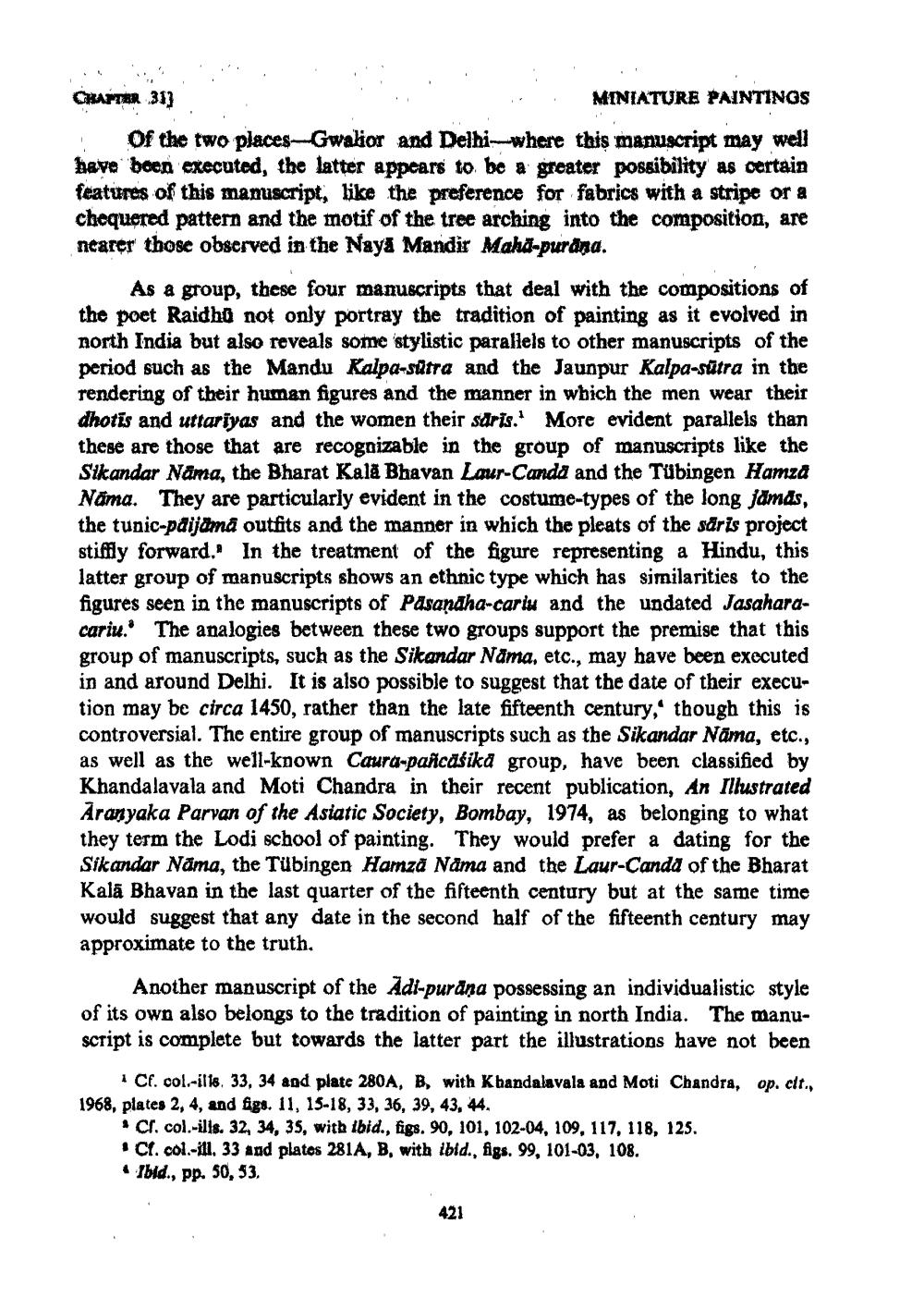________________
CHAPTER 313
MINIATURE PAINTINGS
Of the two places-Gwalior and Delhi-where this manuscript may well have been executed, the latter appears to be a greater possibility as certain features of this manuscript, like the preference for fabrics with a stripe or a chequered pattern and the motif of the tree arching into the composition, are nearer those observed in the Naya Mandir Maha-purana.
As a group, these four manuscripts that deal with the compositions of the poet Raidho not only portray the tradition of painting as it evolved in north India but also reveals some stylistic parallels to other manuscripts of the period such as the Mandu Kalpa-sutra and the Jaunpur Kalpa-sutra in the rendering of their human figures and the manner in which the men wear their dhotis and uttariyas and the women their saris. More evident parallels than these are those that are recognizable in the group of manuscripts like the Sikandar Nama, the Bharat Kala Bhavan Laur-Canda and the Tübingen Hamza Nama. They are particularly evident in the costume-types of the long jamas, the tunic-paijama outfits and the manner in which the pleats of the säris project stiffly forward. In the treatment of the figure representing a Hindu, this latter group of manuscripts shows an ethnic type which has similarities to the figures seen in the manuscripts of Pasandha-cariu and the undated Jasaharacariu. The analogies between these two groups support the premise that this group of manuscripts, such as the Sikandar Näma, etc., may have been executed in and around Delhi. It is also possible to suggest that the date of their execution may be circa 1450, rather than the late fifteenth century, though this is controversial. The entire group of manuscripts such as the Sikandar Nama, etc., as well as the well-known Caura-pañcāšikā group, have been classified by Khandalavala and Moti Chandra in their recent publication, An Illustrated Aranyaka Parvan of the Asiatic Society, Bombay, 1974, as belonging to what they term the Lodi school of painting. They would prefer a dating for the Sikandar Nama, the Tübingen Hamza Nama and the Laur-Canda of the Bharat Kala Bhavan in the last quarter of the fifteenth century but at the same time would suggest that any date in the second half of the fifteenth century may approximate to the truth.
Another manuscript of the Adl-purana possessing an individualistic style of its own also belongs to the tradition of painting in north India. The manuscript is complete but towards the latter part the illustrations have not been
Cf. col.-ills. 33, 34 and plate 280A, B, with Khandalavala and Moti Chandra, op. cit., 1968, plates 2, 4, and figs. 11, 15-18, 33, 36, 39, 43, 44.
* Cr. col.-ills. 32, 34, 35, with ibid., figs. 90, 101, 102-04, 109, 117, 118, 125. Cf. col.-ill. 33 and plates 281A, B, with ibid., figs. 99, 101-03, 108. Ibid., pp. 50, 53.
421




